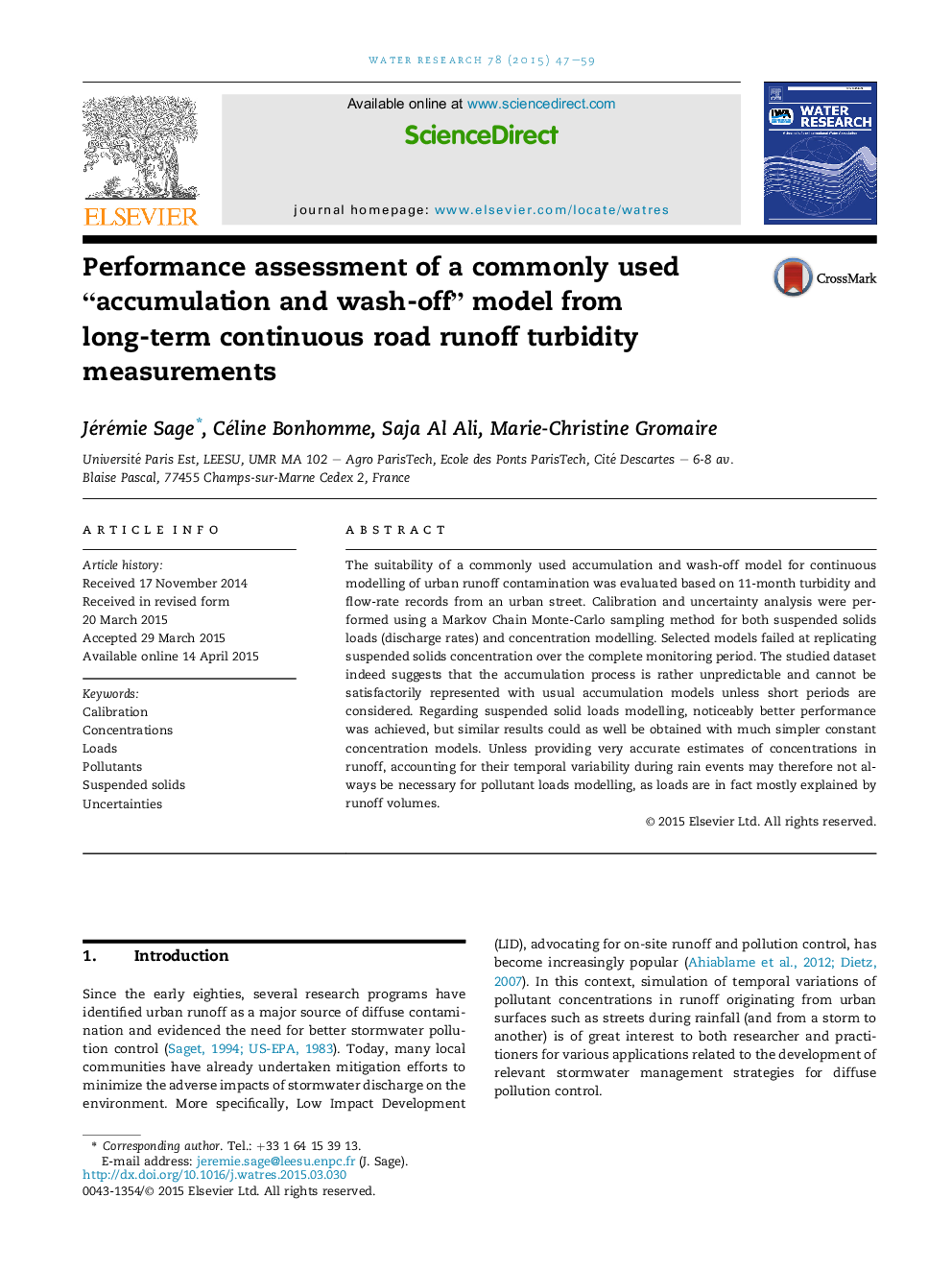| Article ID | Journal | Published Year | Pages | File Type |
|---|---|---|---|---|
| 4481115 | Water Research | 2015 | 13 Pages |
•The relevance of a commonly used accumulation and wash-off model was evaluated.•11-month turbidity and flow-rate records from an urban street were used.•Model was more efficient at simulating suspended solids loads than concentrations.•Model failed at simulating the variability of sediment loads stored over road surface.•Current models cannot probably capture the variability of concentrations in runoff.
The suitability of a commonly used accumulation and wash-off model for continuous modelling of urban runoff contamination was evaluated based on 11-month turbidity and flow-rate records from an urban street. Calibration and uncertainty analysis were performed using a Markov Chain Monte-Carlo sampling method for both suspended solids loads (discharge rates) and concentration modelling. Selected models failed at replicating suspended solids concentration over the complete monitoring period. The studied dataset indeed suggests that the accumulation process is rather unpredictable and cannot be satisfactorily represented with usual accumulation models unless short periods are considered. Regarding suspended solid loads modelling, noticeably better performance was achieved, but similar results could as well be obtained with much simpler constant concentration models. Unless providing very accurate estimates of concentrations in runoff, accounting for their temporal variability during rain events may therefore not always be necessary for pollutant loads modelling, as loads are in fact mostly explained by runoff volumes.
Graphical abstractFigure optionsDownload full-size imageDownload high-quality image (362 K)Download as PowerPoint slide
